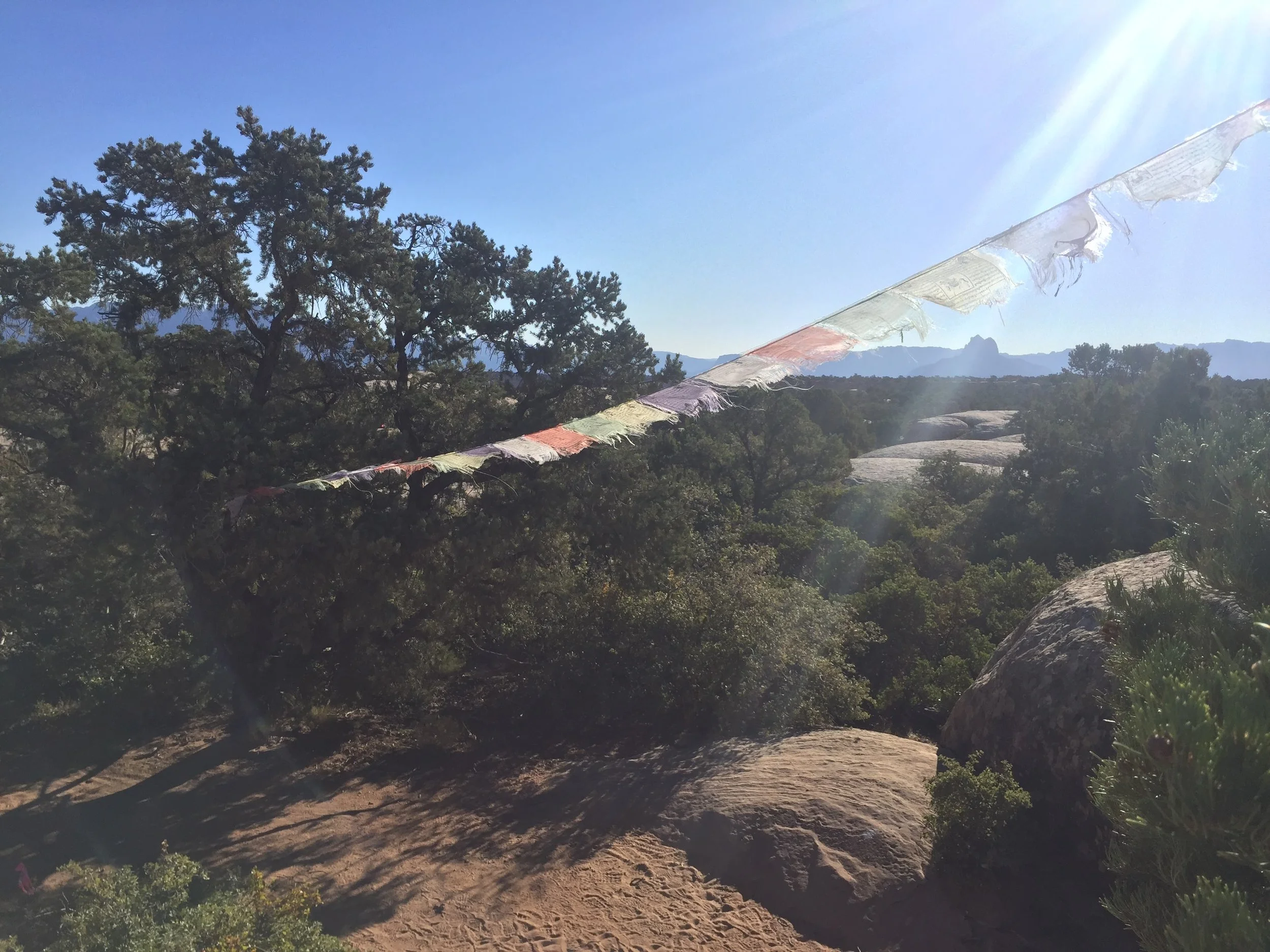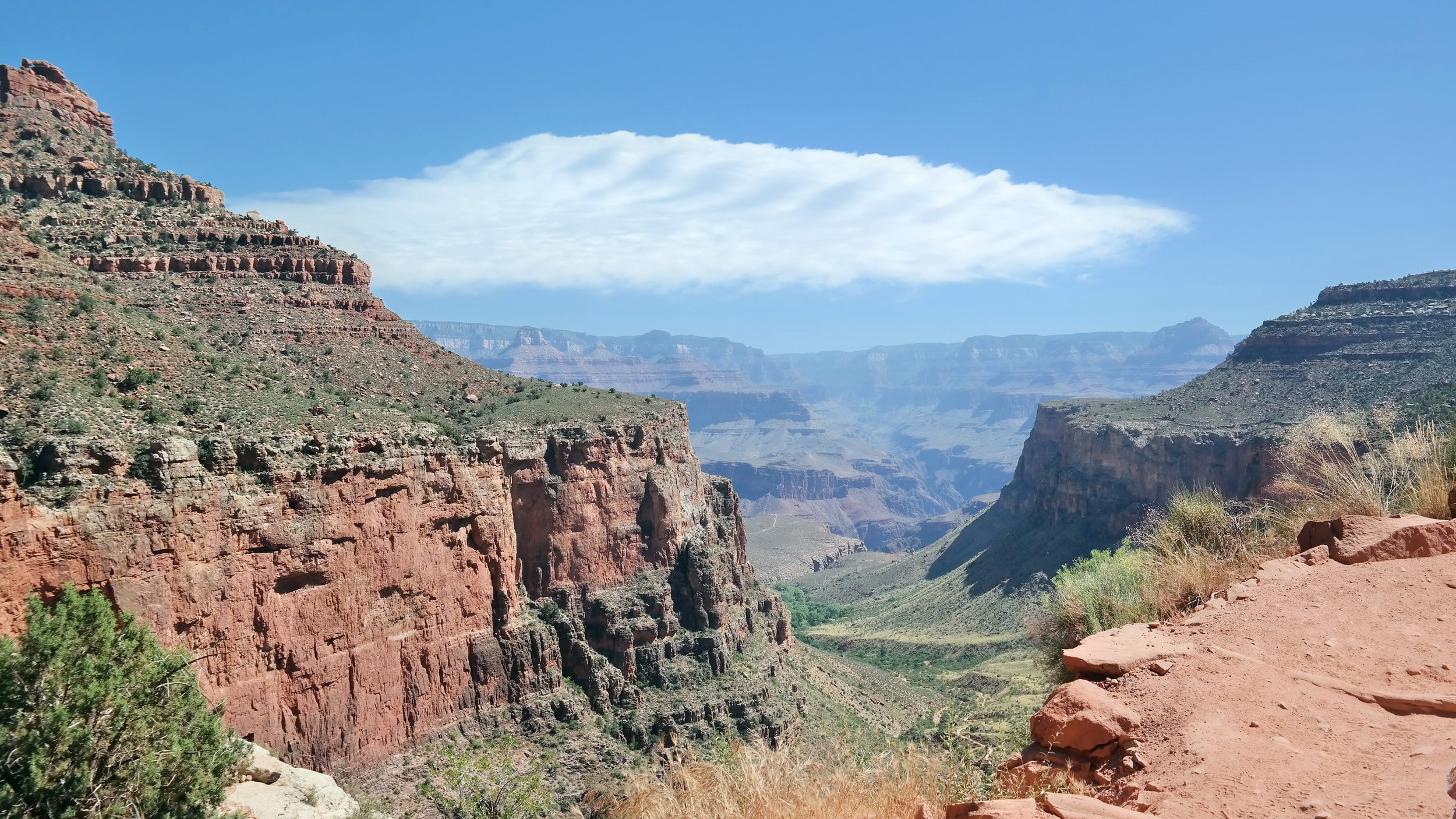We had the opportunity to hike the Milford Track at the end of our honeymoon to New Zealand in November. It was without a doubt the highlight of our trip (Yes, it even surpassed our visit to The Shire.). Aside from the long distance you'll have to travel to get there, the hike is actually very accessible and easy to do if you have all the information you need to plan it. Hopefully this post will help with that part!
The Milford Track is a 53.5km (33.2 mile) hike through Fiordland National Park on the southern tip of New Zealand. For 4 days and 3 nights, you tramp through some of the most breathtaking scenery in the country, which is saying something because damn, New Zealand is a ridiculously beautiful place. The track, heralded as the most popular of New Zealand's nine Great Walks, takes you through rainforest, over a mountain pass, and past countless waterfalls and bubbling streams.
The start of the Track!
When to Go
The Great Walks season is from end of October to beginning of May each year. The official season for 2017 is October 25th through May 4th. For those of us on the opposite side of the world, remember that Winter and Spring for us is Summer and Fall for New Zealand.
You can also hike the Milford Track in the off season, but the hut facilities are greatly reduced and there are additional safety concerns (like avalanches) to consider. The Department of Conservation suggests that only experienced and well equipped people attempt the track in the off season.
This is a popular hike so book early to avoid disappointment. For our trip at the beginning of November, we made our reservations in mid-May. At the time of our reservations, there were only a couple spots left in each hut. The Department of Conservation (DOC) hasn't released the dates that reservations will open yet, but they'll be posted here.
Day 2 of the hike, surrounded by waterfalls on both sides.
Why walk the track independently versus taking a guided trip?
You can walk the track independently or pay large amounts of money to take part in a guided tour. The guided tours will run you between $2,000 and $3,200 (NZD). They're easier and more comfortable since your food is provided (lighter packs!) and you stay in private huts. But where's the fun in that?
Walking the track independently will cost under $500 a person. This includes the cost of transportation to and from Queenstown and food for four days. You'll want to add another $200 or so if you need car relocation services.
Whether you pay for the guided tour or not, everyone gets to hike the same trail and see the same amazing scenery. For me, the main appeal of a guided tour is the convenience of not having to plan anything; however, hiking independently only takes a little extra effort and saves mucho moolah.
Logistics
Getting to and from the trailhead is by far the hardest part of the hike. The DOC actually has a fantastic website with all of the information you need, but I still managed to get confused while I was booking this trip. I've attempted to simplify all the relevant information for you in the Itinerary and Reservation sections below.
Itinerary
Below is what your itinerary will look like. You can only hike the Track in one direction. If you're not coming from Queenstown like we were, then simply substitute your previous location where it says Queenstown.
Day 1:
Queenstown > Te Anau Downs
Te Anau Downs Water Taxi > Trailhead
Trailhead > Clinton Hut (5km, 3 miles)
Day 2:
Clinton Hut > Mintaro Hut (16.5km, 10 miles)
Day 3:
Mintaro Hut > Dumpling Hut (14 km, 8.6 miles)
Day 4:
Dumpling Hut > Sandfly Point (18km, 11 miles)
Ferry from Sandfly Point > Milford Sound Village
Milford Sound Village > Queenstown or wherever you're going next!
Reservations
Here is a list of all of the reservations you'll need to complete the trip, in the order you should complete them:
- Hut reservations. You must make a reservation through the DOC website for all 3 huts.
- Ferry from Te Anau Downs to the start of the trailhead (about an hour ferry ride). Note: Both ferry rides (see #3) can be booked at the same time that you book the huts. To simplify things and to ensure you get the ferry times you want, I highly suggest booking at the same time. If for some reason you don't want to take the DOC run ferry, you can book this leg of the trip through Fiordland Water Taxi.
- Ferry from Sandfly Point (end of trail) to Milford Sound Village (a 5 minute ferry ride). As far as I know, this can only be booked through the DOC. Again, I suggest booking this at the same time you book the huts.
- Bus to Te Anau Downs. The Tracknet bus is great and syncs it's arrival times with the ferry departure times. The bus from Queenstown to Te Anau Downs also makes a stopover at the Te Anau DOC Visitor Centre so passengers can collect hut and boat tickets.
- Bus from Milford Sound Village to wherever you're going after the hike.
What if I'm driving instead of taking the bus?
We found the Tracknet bus system to be extremely easy and didn't want to pay for a rental car that we weren't going to use for four days, but if you are renting a car, you have a few different options. You can pay for a car relocation service such as Easy Hike. They will relocate your car from Te Anau Downs to Milford sound so you can pick it up at the end of the hike. This will run you about $225. You can also park your car at Te Anau Downs and then book the bus from Milford Sound to Te Anau. Our bus stopped at Te Anau Downs on the way to Te Anau for those who left their cars. This stopover isn't listed on Tracknet's website, so I suggest calling to confirm if you want to use this option.
View from trail on Day 2
What about the huts?
There is no camping allowed on the track. Honestly, camping probably wouldn't be very enjoyable because of the exorbitant amount of rain the area gets. Instead of tents, you stay in three different huts along the trail.
The huts are surprisingly comfortable. During the Great Walks season each hut includes bunks with mattresses, clean water supply, flushing toilets and sinks (no showers), and gas stoves for cooking. The sleeping area is communal, so pray you don't get a snorer next to you like we did on the first night. There is also a resident DOC ranger at each hut to give you weather updates and answer any questions.
View from Clinton Hut during a brief break in the rain.
View of the moon from the front porch of Mintaro Hut.
What to bring
The DOC website has a great equipment list for the hike. I'll stress a few things that I think were extra important to have on hand.
Waterproof matches or lighter: The gas stoves do not have starters on them so you must bring your own fire. Unfortunately, this was the one thing we forgot. We had to spend the entire trip begging matches off other hikers.
Sandals/Camp shoes: You're not allowed to wear your boots in the huts and you definitely want to air out your smelly feet after hiking all day.
Ear Plugs and/or Ear Buds: While the DOC ranger encouraged any snorers to sleep in the kitchen area, we still ended up with a horrible snorer in our bunk room the first night. I have seriously never heard anyone snore this loud in my life. Even my audiobook wouldn't drown him out.
Trekking Pole(s): This made coming down the pass on the third day way easier than it would have been without. It was also helpful in our attempts to maneuver around huge puddles.
Waterproof EVERYTHING: It rains here. A lot. A lot a lot. Definitely make sure your boots are waterproof. I also recommend a good rain jacket, waterproof pants, and a rain cover for your pack.
Sandfly Repellant: These tiny bugs come straight from hell and will not only annoy the crap out of you by flying around your face but will bite you too. The bites often don't show up and get itchy for a few days either, so they're extra sneaky. Definitely bring sand fly repellant and apply multiple times a day. You'll be especially glad when you get to Sandfly Point at the end of the hike.
Something to do in the evenings: We finished our hike before 3pm each day. If you have good weather, you can spend the afternoons exploring the areas around the hut. If not, you're stuck in the hut. Bring a book (we both brought our Kindles), cards, or something else to occupy your time just in case.
Mackay Falls on the 4th day of the hike.
Here we are at Sandfly Point. You can't tell because they're so tiny but there are swarms of sandflies all around us.
Other tips
Don't miss Sutherland Falls: On the third day, it might be tempting to skip the side track that leads to Sutherland Falls and head straight for Dumpling Hut. Don't do that. Sutherland Falls is the highest waterfall in New Zealand at 580 meters, and is simply amazing. It's well worth the roughly 45 minute detour, even if you're tired. You'll be glad you did it.
View of Sutherland falls. It's really hard to tell the scale from the photos but it is massive!
View from our Riverview Chalet at Milford Sound Lodge
After the Hike: If you'd like to treat yourself after the hike, we recommend staying in one of the Chalets at the Milford Sound Lodge. We stayed two nights in a Riverside Chalet and enjoyed it immensely. The view of Cleddau River from the King sized bed in our private suite might have been the best part of our whole honeymoon outside of the hike. It was especially rewarding after spending the previous three nights in the huts. It's the only accommodation in the area so you should book at the same time you book your hike.
Make your pack lighter: If you're visiting New Zealand for an extended period of time like we were and aren't renting a car, you might be looking to temporarily off-load some of the extra stuff you have in your pack before you hike for 4 days (e.g. jeans, nicer shoes, etc.). We ended up leaving stuff with our hotel in Queenstown and coming back for it later, but we also noticed the Queenstown Airport had lockers we could have used that were not very expensive.
Helpful Resources:
- Tracknet
- Department of Conservation Website
- I found NewZealand.com extremely helpful in planning our entire trip, and they have a great write up about the Milford Track and what to expect each day.
On Mackinnon Pass, elevation 1,154 meters




